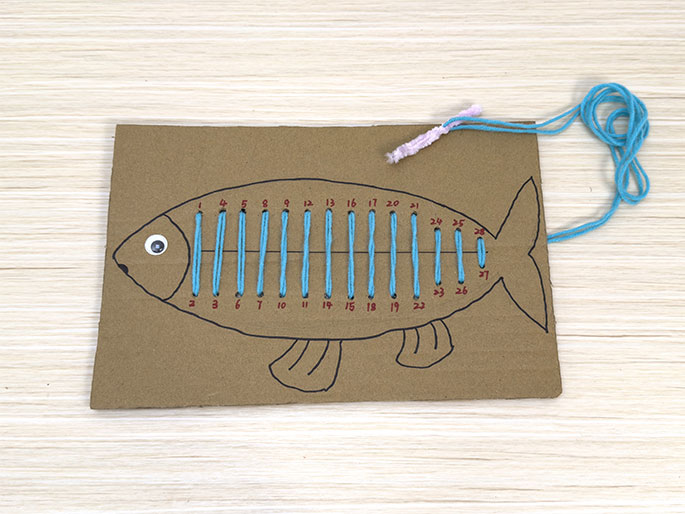Counting Fish Board
Playful Learning

Ages: 3-5

30 minutes

Grownup needed
A math game that helps young children recognize numbers and numerical order while developing fine motor skills. You can adjust the numbers on the board based on your child's developmental stage to create an appropriate difficulty level.
Materials Needed
- 30cm × 50cm cardboard
- Ruler
- Markers
- Pencil
- Adhesive googly eye
- Pipe cleaner
- Yarn

Step-by-step tutorial
Draw a long fish on the 30cm × 50cm cardboard using a marker.

Attach a googly eye to the fish's head.

Using a ruler and marker, mark dots every 1.5cm along the bottom half of the fish. Then make corresponding marks vertically aligned on the top half of the fish.

Use a pencil to punch small holes at each marked point.

Write numbers in a snake pattern above or below the dots using a red marker.

Fold a pipe cleaner in half and twist the ends together to secure them.

Thread yarn through the pipe cleaner and tie a knot at the end to create your threading tool.

Start threading through the holes in the fish, beginning with number 1 from the bottom of the cardboard.

Can you thread through all the holes in numerical order?


 STEM Activities
STEM Activities Artistic Adventures
Artistic Adventures Playful Learning
Playful Learning The Recipe Repository
The Recipe Repository  Nature Explorations
Nature Explorations












